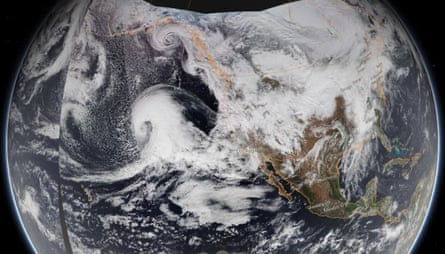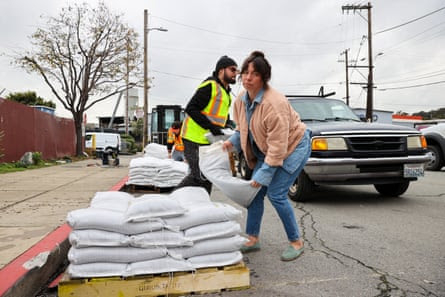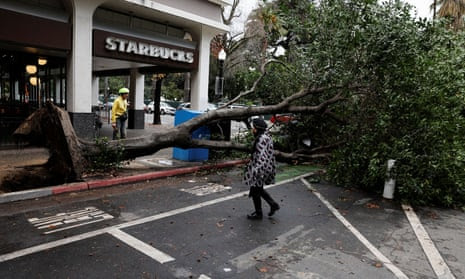All the northern part of California, more precisely around San Francisco and Sacramento, is the region most in danger. The authorities warned against landslides and floods, warning that this storm was capable of causing deaths.
With rain, more than 60,000 homes that experienced major power outages, according to the site PowerOutage, while more than 80 flights to or from the San Francisco airport were cancelled, according to the site Flightaware.

Close to the region (Mendocino, Santa Cruz, Santa Clara), several roads were cut because of flooding, falling trees or landslides.
The U.S. Weather Service (NWS) warned that winds of up to 110 km/h are expected on Wednesday, January 4. Heavy rains are also expected to fall in the area, with up to 10 centimeters of precipitation expected in the San Francisco Bay Area and 1.2 meters of snow in the Sierra Nevada Mountains. The deluge is expected to continue on Thursday, January 5.
The city of San Francisco has set up an emergency operations center and halted traffic on its famous cable cars.
“If you don’t have to be outside in San Francisco, avoid going out on the road,” warned Rachel Gordon, an official of the city’s public works department.
Virtually all bars and restaurants were closed on Wednesday, January 4, and some residents were asked to work from home. City fire officials reported several fallen trees Wednesday morning, Jan. 4, and some minor flooding before the heart of the storm arrived.
Scenes of apocalysis with thousands of sandbags being distributed to residents in areas at risk of flooding.

“We are very worried,” San Francisco resident Deepak Srivastava told CBS. “I’ve spent the day stacking sandbags in front of all the garage entrances, and we’re keeping our fingers crossed that we don’t get more damage.”
This area has already suffered the consequences of a series of storms. The latest one hit on New Year’s Eve and caused mudslides and power outages. At least one person died after being trapped in his car by the flooding, according to authorities.
To end the year 2022, on December 31, San Francisco recorded the second-wettest day in its history since the measure was launched, with 14 cm of rainfall.
After months of drought, the region’s soils will struggle to absorb another deluge, increasing the risk of flash flooding.
“On its own, this storm could cause localized flooding and landslides,” meteorologist Matt Solum summarized for AFP. “But with the recent wet conditions (…), any additional rain is going to run down instead of being absorbed by the ground.”
Meteorologists are not being very reassuring, and they predict a series of storms that is currently hitting California is not about to stop.
“We’re expecting another one over the weekend,” Solum says. “And then potentially several storms for next week. And possibly the week after that as well.”



Comment here